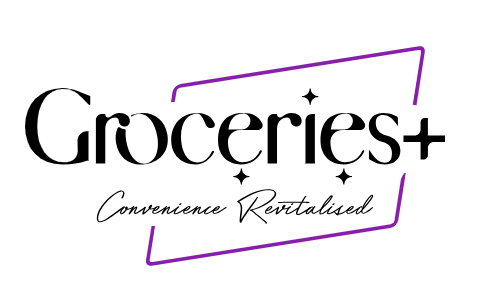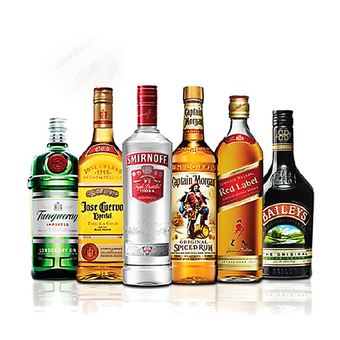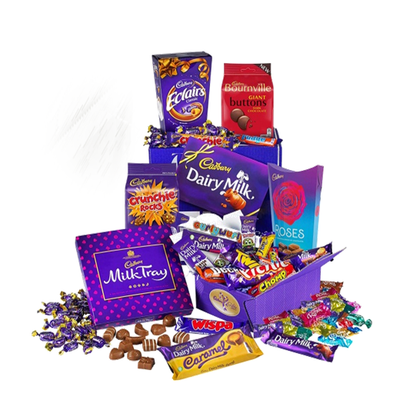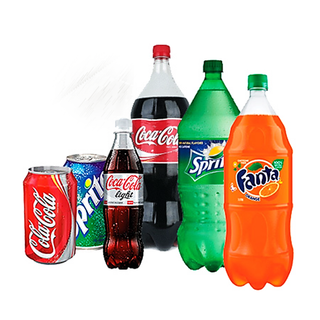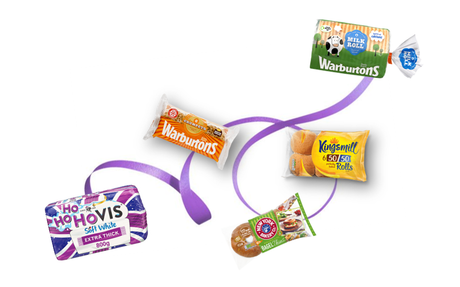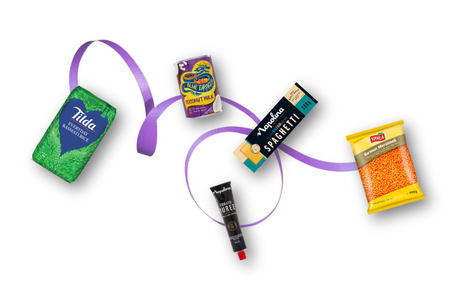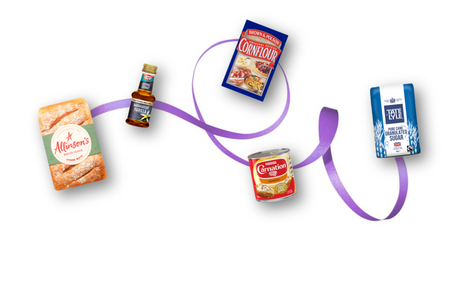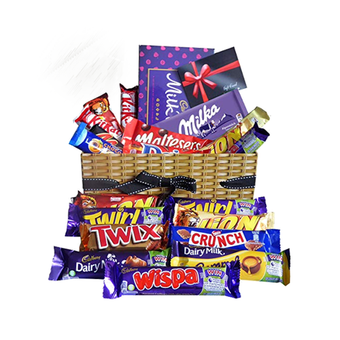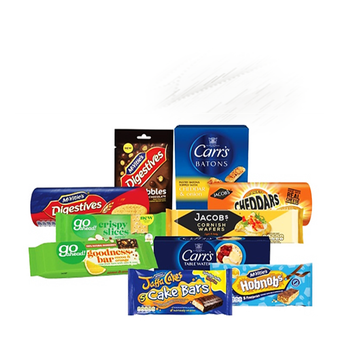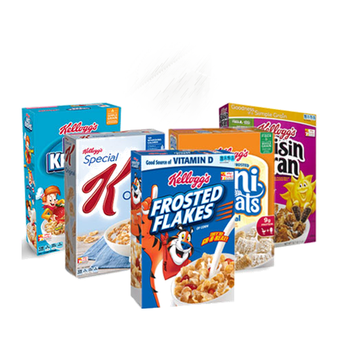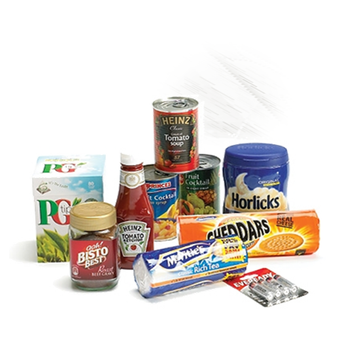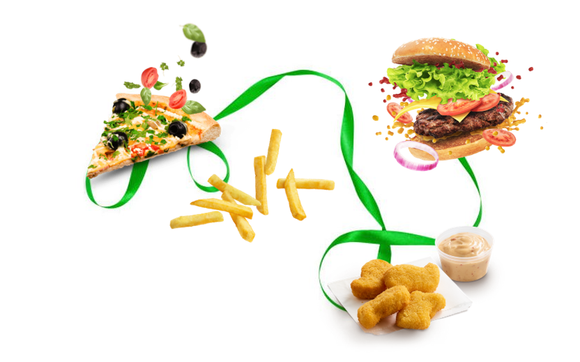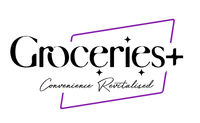Groceries+
Groceries-plus delivered in minutes
24hr | Supermarket | Delivery
Groceries delivered in minutes
Direct | 24hr | Delivery
Groceries-Plus |Order your grocery shopping for a same-day delivery to your door in minutes.
WELCOME50
Add voucher for 50%OFF your first order.
24hr Alcohol
To run out is one thing,
but not to have? is entirely..
the same thing!
We deliver spirits in minutes.
On-Call
'Choc Docs', dedicated to cocoa deliverance.
Order online now, we'll deliver in minutes.
Bubbly
Offering a wide selection of soft drinks, online ready for your home delivery in minutes.
Crafted Essentials |Specially selected range of Groceries+
Crafted essentials are a hand-picked select few essentials which can be found online and delivered to your home direct from our supermarket within minutes, providing true convenience. |24hr
Baked to Perfection
View a range of ready baked essentials, from sliced and crusty breads and crumpets to sweet and crispy croissants and scones.
Chef by Night
Feeling creative?..
we a have the perfect selection for you to cook up a Michelin rated master piece within minutes.
Remember gents!,
the kitchen is part of the house.. so man up! if you claim to be the man of it.. ;)
Offering an extensive selection of chocolate delights online, in-stock and ready for delivery.
from sauce and seasoning to batteries and fuel, Groceries-Plus aim to provide a little of all things essential.
Takeaway Fxxd |Quality takeaway food delivered direct to your table. |by Xquis'eat..
A supermarket is a self-service shop offering a wide variety of food, beverages and household products, organized into sections. Strictly speaking, a supermarket is larger and has a wider selection than earlier grocery stores, but is smaller and more limited in the range of merchandise than a hypermarket or big-box market. In everyday American English usage, however, "grocery store" is often casually used as a synonym for "supermarket". The supermarket retail format first appeared around 1930 in the United States as the culmination of almost two decades of retail innovations, and began to spread to other countries after extensive worldwide publicity in 1956.
The supermarket typically has places for fresh meat, fresh produce, dairy, deli items, baked goods, and similar foodstuffs. Shelf space is also reserved for canned and packaged goods and for various non-food items such as kitchenware, household cleaners, pharmacy products and pet supplies. Some supermarkets also sell other household products that are consumed regularly, such as alcohol (where permitted), medicine, and clothing, and some sell a much wider range of non-food products: DVDs, sporting equipment, board games, and seasonal items (e.g., Christmas wrapping paper, Easter eggs, school uniforms, Valentine's Day themed gifts, Mother's Day gifts, Father's Day gifts and Halloween).
A larger full-service supermarket combined with a department store is sometimes known as a hypermarket. Other services may include those of banks, cafés, childcare centres/creches, insurance (and other financial services), mobile phone sales, photo processing, video rentals, pharmacies, and gas stations. If the eatery in a supermarket is substantial enough, the facility may be called a "grocerant", a portmanteau of "grocery" and "restaurant".
The traditional supermarket occupies a large amount of floor space, usually on a single level. It is usually situated near a residential area in order to be convenient to consumers. The basic appeal is the availability of a broad selection of goods under a single roof, at relatively low prices. Other advantages include ease of parking and frequently the convenience of shopping hours that extend into the evening or even 24 hours of the day. Supermarkets usually allocate large budgets to advertising, typically through newspapers and television. They also present elaborate in-shop displays of products.
Supermarkets typically are chain stores, supplied by the distribution centres of their parent companies, thus increasing opportunities for economies of scale. Supermarkets usually offer products at relatively low prices by using their buying power to buy goods from manufacturers at lower prices than smaller stores can. They also minimize financing costs by paying for goods at least 30 days after receipt and some extract credit terms of 90 days or more from vendors. Certain products (typically staple foods such as bread, milk and sugar) are very occasionally sold as loss leaders so as to attract shoppers to their store. Supermarkets make up for their low margins by a high volume of sales, and with of higher-margin items bought by the customers. Self-service with shopping carts (trolleys) or baskets reduces labour costs, and many supermarket chains are attempting further reduction by shifting to self-service check-outs.
History
Early history of retail food sales
Historically, the earliest retailers were peddlers who marketed their wares in the streets, but by the 1920s, retail food sales in the United States had mostly shifted to small corner grocery stores. In that era, the standard retail grocery business model was for a clerk to fetch products from shelves behind the merchant's counter while customers waited in front of the counter, indicating the items they wanted. Customers needed to ask because "most stores were designed to keep customers (and their children) away from the food". Most foods and merchandise did not come in individually wrapped consumer-sized packages, so the clerk had to measure out and wrap the precise amount desired. Merchants did not post prices, which forced customers to haggle and bargain with clerks to reach fair prices for their purchases. This business model had already been established in Europe for millennia, with examples of primitive retail stores found as far back as ancient Rome. It offered extensive opportunities for social interaction: many regarded this style of shopping as "a social occasion" and would often "pause for conversations with the staff or other customers".
These practices were by nature slow, had high labour intensity, and were quite expensive. The number of customers who could be attended to at one time was limited by the number of staff employed in the store. Early grocery stores were "austere" and tiny by modern standards, with as few as 450 items. Shopping for groceries often involved trips to multiple specialty shops, such as a greengrocer, butcher, bakery, fishmonger and dry goods store, in addition to a general store. Milk and other items of short shelf life were delivered by a milkman. These small retailers were the final links in a "long and tortuous food chain," as most of them were far too small to deal directly with most of the persons who actually harvested, processed, and distributed all that food. During the 1920s, the highly inefficient nature of the American food distribution system meant that the "average urban family spent fully one-third of its budget on food"
One of the most important defining features of the modern supermarket is cheap food. The vast abundance of cheap, wholesome food which modern consumers take for granted today was simply unimaginable before the middle of the 20th century, to the point that the first American supermarket customers in the 1930s were overcome with emotion at the sight of so much cheap food.
Before the 20th century, food was neither cheap, nor wholesome, nor abundant. For example, in 1812, almost 90 percent of Americans worked in food production, and they struggled to stay alive on food which was often scarce, of poor quality, and riddled with diseases which could and did often kill them.
Early experiments in building large stores and chain stores
The concept of an inexpensive food market relying on economies of scale was developed by Vincent Astor, but he was ahead of his time. He founded the Astor Market in 1915, investing $750,000 of his fortune into a 165′ by 125′ (50×38-metre) corner of 95th and Broadway, Manhattan, creating, in effect, an open-air mini-mall that sold meat, fruit, produce and flowers. The expectation was that customers would come from great distances ("miles around"), but in the end, even attracting people from ten blocks away was difficult, and the market folded in 1917.
The Great Atlantic & Pacific Tea Company (A&P), which was established in 1859, was an early grocery store chain in Canada and the United States. It became common in North American cities in the 1920s. Early chains like A&P did not sell fresh meats or produce. During the 1920s, to reduce the hassle of visiting multiple stores, U.S. grocery store chains like A&P introduced the combination store. This was a grocery store which combined several departments under one roof, but generally maintained the traditional system of clerks pulling products from shelves on request. By 1929, only one in three U.S. grocery stores was a combination store.
Self-service grocery stores
The concept of a self-service grocery store predates the supermarket; it was developed by entrepreneur Clarence Saunders at his Piggly Wiggly stores, the first of which opened in 1916. Saunders was awarded several patents for the ideas he incorporated into his stores. The stores were a financial success and Saunders began to offer franchises.
The general trend since then has been to stock shelves at night so that customers, the following day, can obtain their own goods and bring them to the front of the store to pay for them. Although there is a higher risk of shoplifting, the costs of appropriate security measures ideally will be outweighed by reduced labour costs.[26][unreliable source?]
Birth of the supermarket
Historically, there has been much debate about the origin of the supermarket. For example, Southern California grocery store chains Alpha Beta and Ralphs both have strong claims to being the first supermarket. By 1930, both chains were already operating multiple 12,000-square-foot (1,100 m2) self-service grocery stores. However, as of 1930, both chains were not yet true supermarkets in the modern sense because their prices remained quite high; as noted above, one of the most important defining features of the supermarket is cheap food. Their main selling point was free parking. Other strong contenders in Texas included Weingarten's and Henke & Pillot.
To end the debate, the Food Marketing Institute in conjunction with the Smithsonian Institution and with funding from H.J. Heinz, researched the issue. They defined the attributes of a supermarket as "self-service, separate product departments, discount pricing, marketing and volume selling". They determined that the first true supermarket in the United States was opened by a former Kroger employee, Michael J. Cullen, on 4 August 1930, inside a 6,000-square-foot (560 m2) former garage in Jamaica, Queens in New York City. The store King Kullen, operated under the logic of "pile it high and sell it cheap". The store layout was designed by Joseph Unger, who originated the concept of customers using baskets to collect groceries before checking out at a counter. Everything displayed for sale in the store "had prices clearly marked", meaning that consumers would no longer need to haggle over prices.[12] Cullen described his store as "the world's greatest price wrecker". At the time of his death in 1936, there were seventeen King Kullen stores in operation. Although Saunders had brought the world self-service, uniform stores, and nationwide marketing, Cullen built on this idea by adding separate food departments, selling large volumes of food at discount prices and adding a parking lot.
Early supermarkets like King Kullen were called "cheapy markets" by industry experts at the time because they were literally so cheap, thanks to their rock-bottom prices; this was soon replaced by the less derogatory and more positive phrase "super market". The compound phrase was then closed up to become the modern term "supermarket".
Grocery stores become supermarkets
A Safeway advertisement from the 1950s
Other established American grocery chains in the 1930s, such as Kroger and Safeway Inc. at first resisted Cullen's ideas, but were eventually forced to build their own supermarkets as the economy sank into the Great Depression. American consumers became extraordinarily price-sensitive at a level never experienced before. Kroger took the new retail format one step further and pioneered the first supermarket surrounded on all four sides by a parking lot.
For A&P, the largest grocery store chain of that era, the conversion from traditional grocery stores to supermarkets came as a terrible shock for the thousands of retail employees whose lives and careers were changed forever. The armies of retail clerks who were the public face of the traditionally slow and social retail experience were replaced with the tedious, specialized jobs necessary to operate a modern supermarket. Stock clerks, usually male, moved boxes and kept the shelves full of goods, while checkout clerks (cashiers), usually female, were faced with never-ending lines of impatient shoppers eager to check out and go. But A&P had no choice but to plunge ahead into this strange new world. One of King Kullen's earliest imitators, Big Bear, opened its first supermarket in 1933 in New Jersey and collected more revenue in one year than over a hundred A&P stores. By 1937, 44 percent of A&P stores were losing money. By February 1940, A&P had closed 5,950 stores and cut the percentage of money-losing stores to 18 percent. There was no way to escape the cold, hard numbers driving this brutal process: in A&P's traditional grocery stores, "wages and overhead expenses" had consumed 18 percent of sales, while in A&P's newly opened supermarkets in those same neighbourhoods, those same numbers were less than 12 percent of sales.
Once the large chains joined the supermarket trend, the new retail format exploded across the country like a wildfire. The number of American supermarkets almost tripled from 1,200 in 32 states in 1936 to over 3,000 in 47 states in 1937. It was well over 15,000 by 1950. One sign of the supermarket format's success in slashing labour costs, overhead, and food prices was that the percentage of disposable income spent by American consumers on food plunged "from 21 percent in 1930 to 16 percent in 1940". The modern era of "cheap food" had begun.
As large chain stores began to dominate the American grocery landscape with their low overhead and low prices (while crushing numerous independent small stores along the way), a backlash to this radical alteration of food distribution infrastructure appeared in the form of numerous anti-chain campaigns. The idea of "monopsony", proposed by Cambridge economist Joan Robinson in 1933, that a single buyer could outmanoeuvre a market of multiple sellers, became a strong anti-chain rhetorical device. With public backlash came political pressure to even the playing field for smaller vendors lacking the luxury of economies of scale. In 1936, the Robinson-Patman Act was implemented as a way of preventing such large chains from using their buying power to reap advantages over small stores, although the act was not well enforced and did not have much impact on such chains.
In the United Kingdom, self-service shopping took longer to become established, despite its Special Relationship with the United States. In 1947, there were just ten self-service shops in the country. In 1951, ex-US Navy sailor Patrick Galvani, son-in-law of Express Dairies chairman, made a pitch to the board to open a chain of supermarkets across the country. The UK's first supermarket under the new Premier Supermarkets brand opened in Streatham, South London, taking ten times as much per week as the average British general store of the time. Other chains caught on, and after Galvani lost out to Tesco's Jack Cohen in 1960 to buy the 212 Irwin's chain, the sector underwent a large amount of consolidation, resulting in 'the big four' dominant UK of today: Tesco, Asda, Sainsbury's and Morrisons.
In the 1950s, supermarkets frequently issued trading stamps as incentives to customers. Today, most chains issue store-specific "membership cards", "club cards", or "loyalty cards". These typically enable the cardholder to receive special members-only discounts on certain items when the credit card-like device is scanned at the checkout. Sales of selected data generated by club cards is becoming a significant revenue stream for some supermarkets.
In the 21st century
As of 2018, there were approximately 38,000 supermarkets in the supermarket's birthplace, the United States; Americans spent $701 billion at supermarkets that year; and the American supermarket stood at the pinnacle of a food production and distribution system so efficient that less than three percent of the U.S. population produced more than enough food to feed everyone. The average American adult "will spend 2 percent of their life inside" supermarkets.
In the 21st century, traditional supermarkets in many countries face intense competition from discounters such as Wal-Mart, Aldi and Lidl, which typically is non-union and operates with better buying power. Other competition exists from warehouse clubs such as Costco that offer savings to customers buying in bulk quantities. Superstores, such as those operated by Wal-Mart and Asda, often offer a wide range of goods and services in addition to foods. In Australia, Aldi, Woolworths and Coles are the major players running the industry with fierce competition among all the three. The rising market share of Aldi has forced the other two to cut prices and increase their private label product ranges. The proliferation of such warehouse and superstores has contributed to the continuing disappearance of smaller, local grocery stores, the increased dependence on the automobile, and suburban sprawl because of the necessity for large floor space and increased vehicular traffic. For example, in 2009 51% of Wal-Mart's $251 billion domestic sales were recorded from grocery goods. Some critics consider the chains' common practice of selling loss leaders to be anti-competitive. They are also wary of the negotiating power that large, often multinationals have with suppliers around the world.
Online-only supermarkets (21st century)
The British online supermarket Ocado, which uses a high degree of automation in its warehouses, was the first successful online-only supermarket. Ocado expanded into providing services to other supermarket firms such as Waitrose and Morrisons.
Delivery robots are offered by various companies partnering with supermarkets.
APP Add to your home screen.
